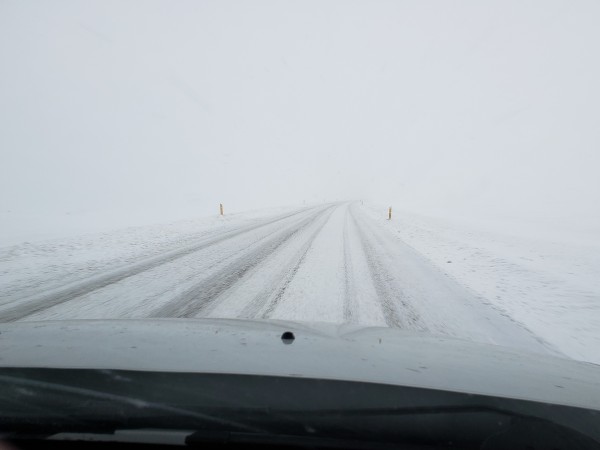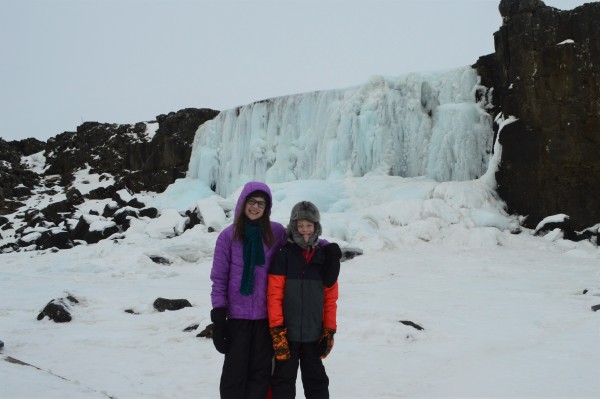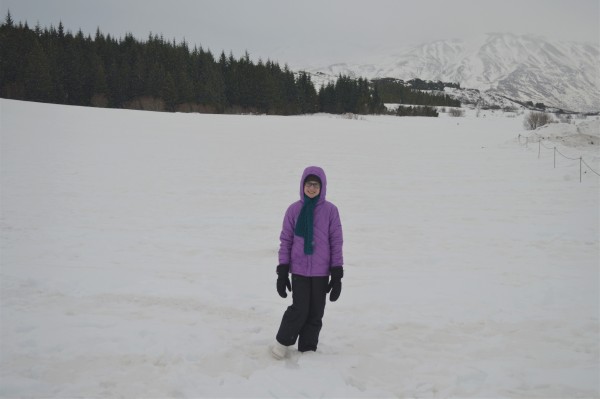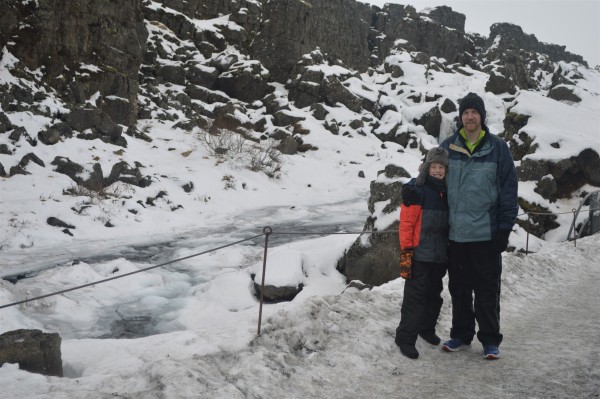After driving to or through Þingvellir National Park on two other occasions, we finally spent the day exploring it on Monday, February 11. Þingvellir is a UNESCO World Heritage site for its history and natural features. The area encompasses the rift zone between the Eurasian and North-American tectonic plates. The plates are pulling apart, causing stress to accumulate over long periods until it is eventually released in an earthquake and the land between the plates subsides. The area is covered with 10,000-year-old lava that originated in a crater south of mount Hrafnabjörg.
Lögberg (Law Rock). During the Icelandic Commonwealth (930 to 1262), Lögberg was the hub of the Alþing meetings. The Law Speaker was chosen by the Lögrétta, the Legislative Assembly, and proclaimed the laws of the Commonwealth out loud from a special place there.
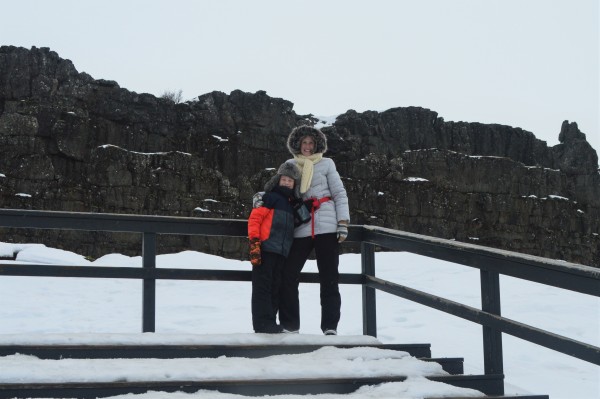
The rift valley with the Þingvellir church and farm and the frozen Lake Þingvallavatn in the distance. In 930 the Icelandic Parliament, Alþingi, was founded at Þingvellir – and remained there until 1798.
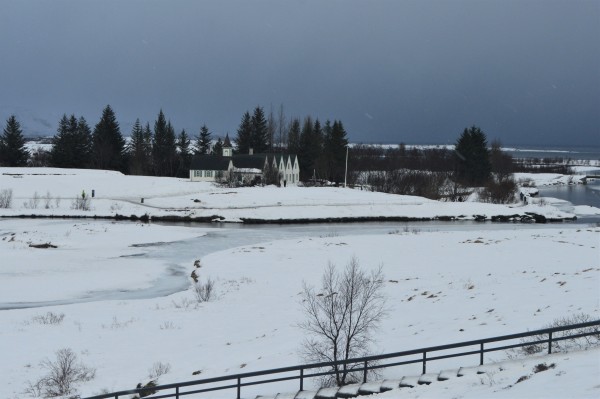
We hiked up the volcanic rock wall of the Almannagjá fault to the visitor center at Hakid where we ate lunch (including chocolate) and dried out.
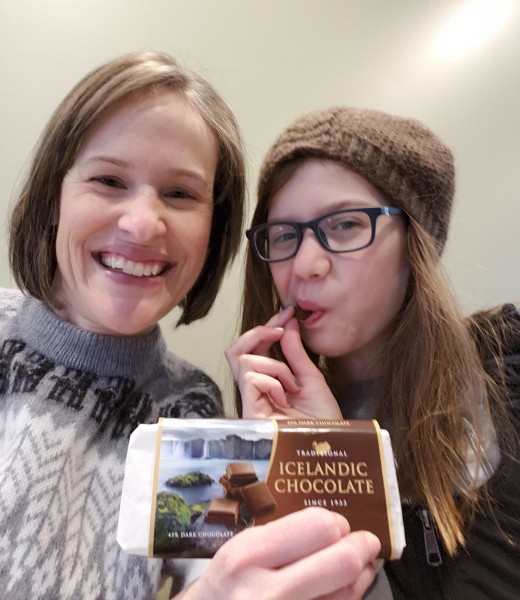
Then we hiked down into the valley to see the Þingvallakirkja.
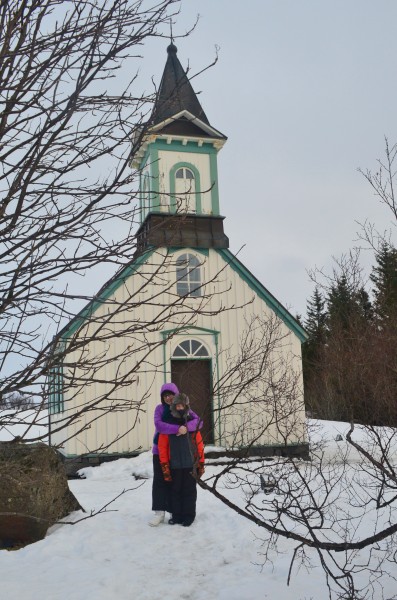
On our hike back to the car, we passed several hot springs. They obviously has some sort of geothermal heat source because they didn’t have any ice on them despite everything else around them, including the huge lake, being frozen.

Our drive home was a bit snowy. We were glad to have studded tires on our car!
